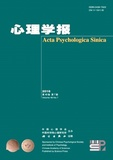Social value orientation (SVO) is a relatively stable personality trait that reflects how the individual evaluate interdependent outcomes for oneself and the other in human social environments. Previous studies showed that people could be classified into proselfs and prosocials by assessing the Triple-Dominance Measure. Emerging studies have demonstrated that SVO is a personality trait that is closely associated with the processing of rewards allocation. Outcome evaluation is closely associated with the reward processing. Past research always focused on the modulation of SVO on the outcomes evaluation involving the monetary rewards. However, relatively little is known about how the SVO modulates the processing of outcome evaluation involving the social rewards for self.
In the present study, we adopted the Event-related potentials (ERPs) technology to examine the temporal processing of the influence of SVO on the processing of the social reward for self. In particular, we focused on two types of social reward in this study, i.e., the “social acceptance” and “reflected glory”. Advice-giving is a typical or common way for individuals to gain the social acceptance and reflected glory. Evaluating outcomes of advice involves with these two kinds of social rewards. Specifically, if individuals' advice is accepted, they may feel that they have garnered the "social acceptance". Further, if the advice provided leads to another's personal success, individuals may further feel a sense of reward through “reflected glory”. The proselfs (n = 26) and prosocials (n = 25) were asked to complete the advice-giving guessing card task, in which task participants acted as an advisor who selected one of two advice options to give another person. Subsequently, all participants were informed that the other accepted (vs. rejected) their advice and the other's final outcome (gain vs. loss), while recording their electroencephalogram (EEG) at the feedback from the other processing stage (advice was accepted or rejected by the other) and outcomes for the other (gain or loss) processing stage.
We focused on the feedback-related negativity (FRN) and P3 in outcome evaluation. The results of ERPs showed that at the feedback from the other processing stage, compared with the proselfs, the prosocials are more sensitive to the feedback from the other. In particular, at the early stage (FRN), there was no difference between having the advice accepting and rejecting for proselfs, however, this FRN effect was observed in the prosocials participants. At the later stage (P3), we also found there was a difference between having the advice accepting and rejecting for prosocials but not for the proselfs. On the other hand, at the final outcome for the other processing stage, at the early stage, there was a main effect of SVO, indicating that for prosocials, the FRN peak-to-peak value is more negative than the proselfs. There was a significant interaction among the SVO, Feedback from the other and Outcome for the other in the FRN. For the prosocials, there was a difference between the other's gain and loss in FRN following their own selections (i.e., advice) were rejected, whereas this difference did not emerge for the proselfs. In addition, we also observed that there was a significant interaction among the SVO, Feedback from the other and Outcome for the other in the P3. In particular, following the participant's advice was rejected, for the prosocials, compared with the other's loss outcome, the other's gain outcome elicited a larger P3. However, for the proselfs, the P3 showed a different pattern, showing that following the participant's advice was rejected, compared with the other's gain outcome, the other's loss outcome elicited a larger P3.
Our findings indicates that the influences of SVO on the processing of self-rewards occurs at the early stage (mirrored in FRN) and the late stage (mirrored in P3). At the feedback from the other processing stage, at the early and the later stages, compared with prosoicals, the proselfs are relatively insensitive to the other's feedback about the advice (rejecting or accepting). At the final outcome for the other processing stage, at the earlier stage, prosocials are sensitive to the others' wins or losses in both the “accepted” and “rejected” conditions, whereas proselfs are not interested in the others' outcomes in the “self are rejected” context. Furthermore, at the late stage of outcome evaluation, prosocials attaches the significance on the other's interest and proselfs attached the importance on the self-interest. Taken together, SVO has a modulation effect on the processing of social rewards.




